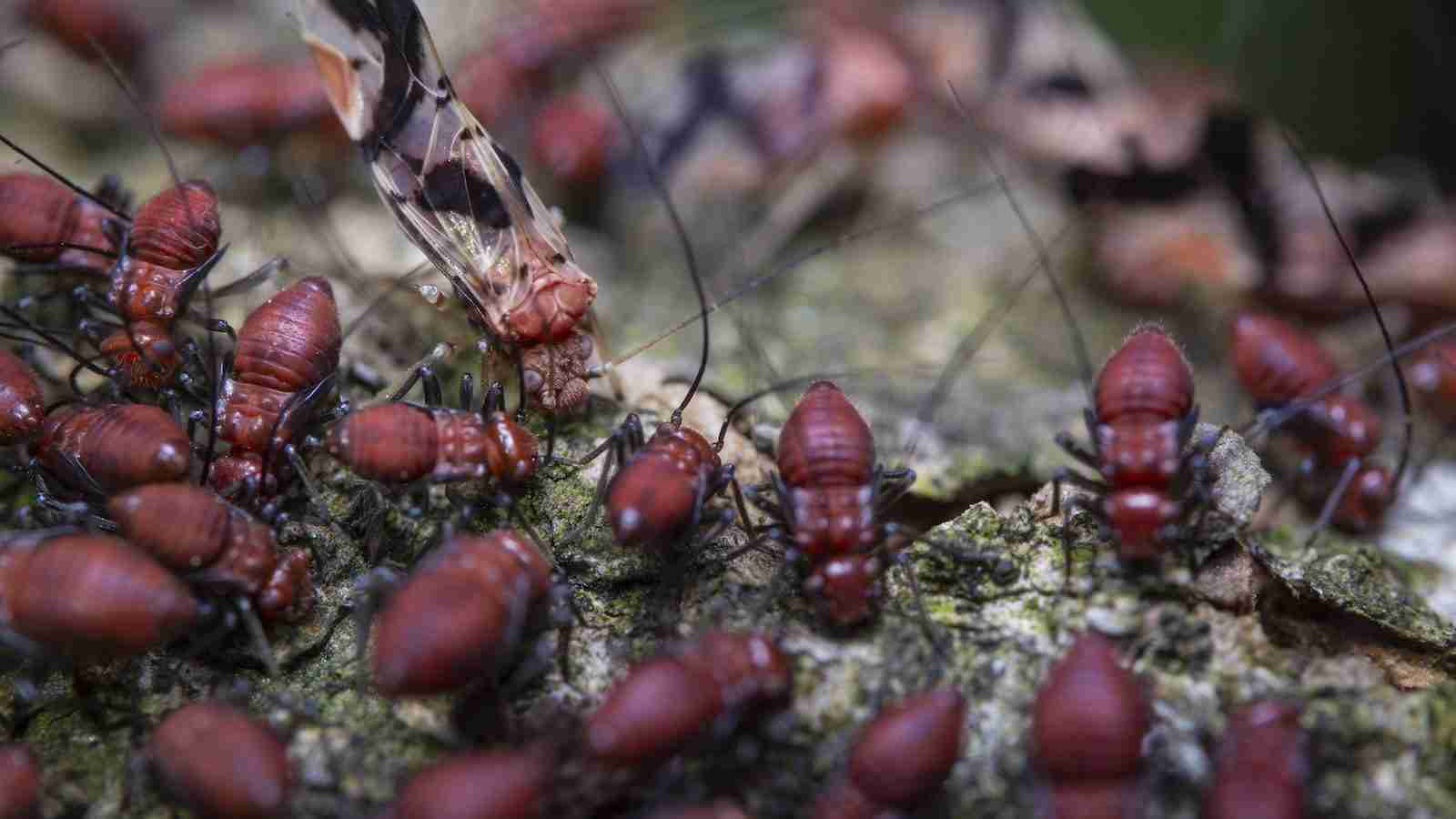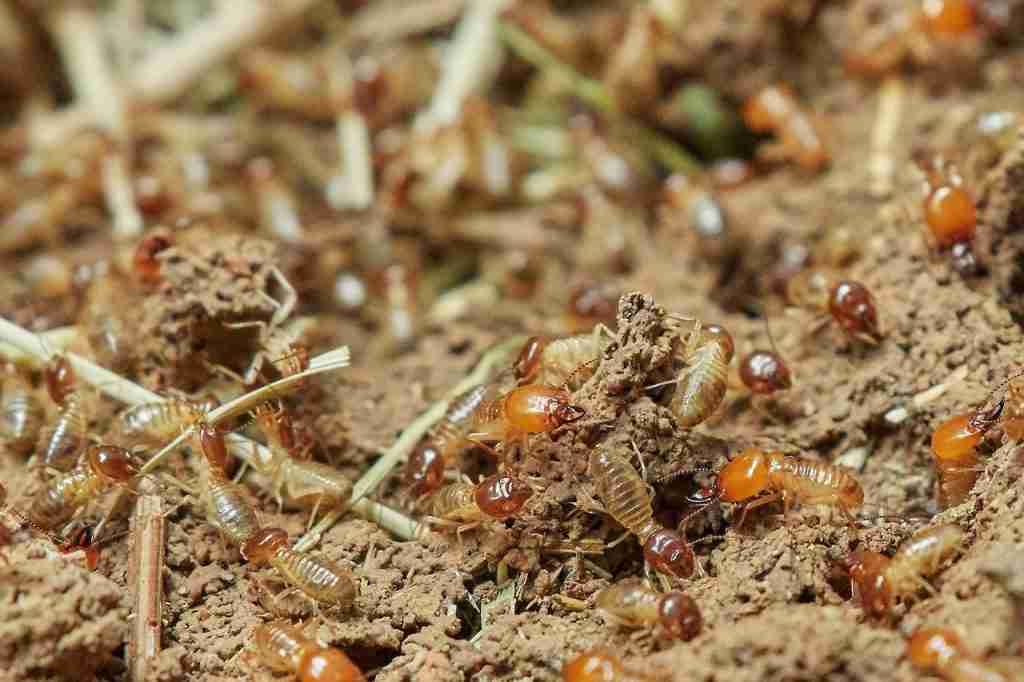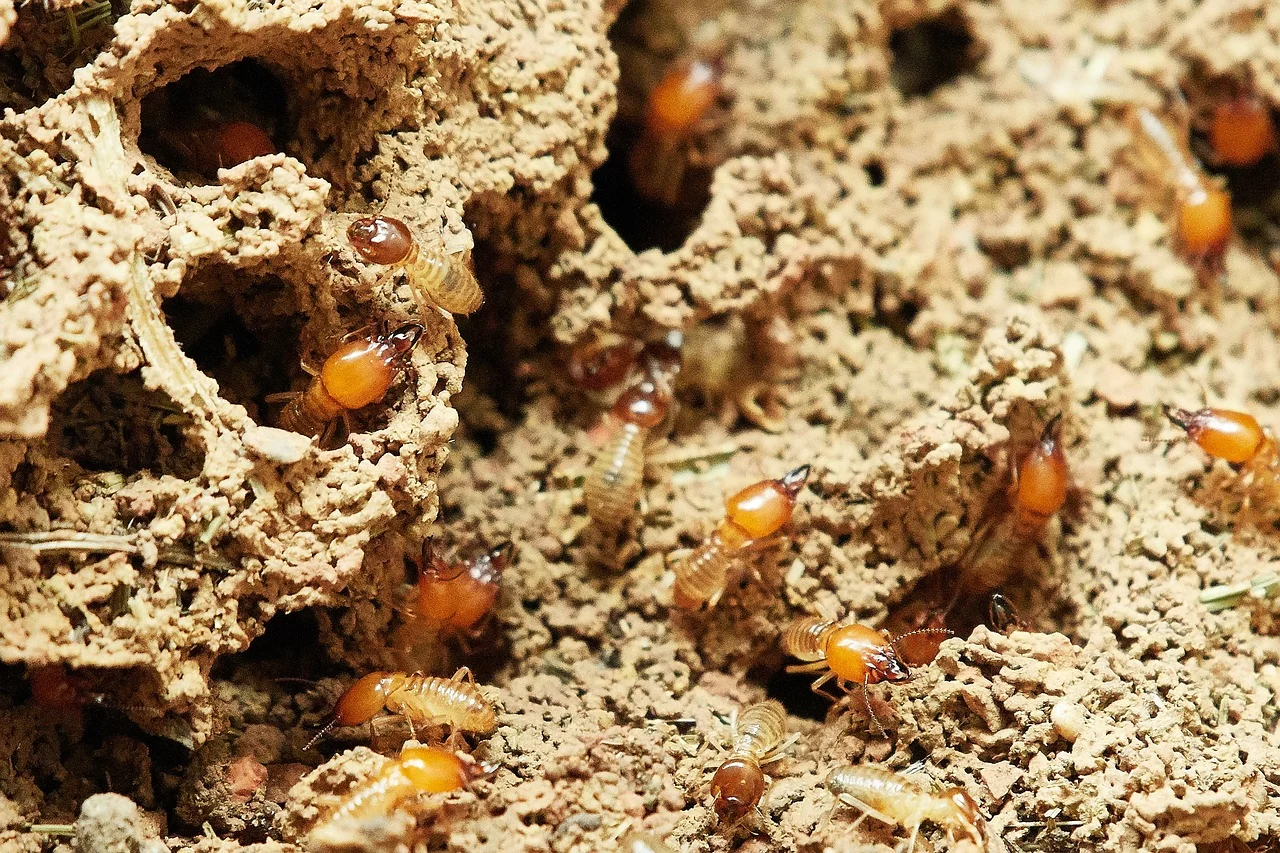27 Facts About Termites You Never know
1. Termite-hatched eggs are known as white larvae.
The king mate with the queen and the queen lays eggs. The larvae are fed through the salivary glands of the king and worker termites. When grown, these larvae take on the roles of workers, soldiers, and reproductive termites.
2. Termite nests are found on almost every continent.
Rising from deserts, tropical rainforests, temperate woodlands, and possibly your local park termites’ mounds and nests are found on almost every continent.
Some species of termites build nests underground and other species build huge above-ground mounds. These mounds can stretch to 80 feet across and 30 feet high, taller than a two-story house.
3. Termite nests are made from mud, digested wood, saliva, and feces.
They are very strong structures made from mud, digested wood, saliva, and feces. There are so many termites spread across the continents that the total weight of all the termites in the world is many times more than the total weight of all the humans in the world.
4. Termites play an important role in decomposing wood and plants.
Termites may seem like a pest, but they actually have an important role in our ecosystem. Their ability to decompose decaying wood and plants helps keep our world clean, and the tunnels they create can also improve soil aeration and enhance plant growth. These are just a few interesting facts about termites.
5. Uncovering the Truth: Startling Facts About Termites and Their Devastating Effects.
The only problem is termites can cause a lot of destruction when they live with humans. Homes and objects made with wood can be destroyed quickly by termites.
They are known as silent destroyers because they can chew through walls and walls without being detected until a lot of damage is done. Each year termites cost billions of dollars in damage to buildings.
6. Termites have quite a busy life.
Termites are small, industrious animals. Eating and working never cease for them. They eat continuously, every day of the week. Can you imagine working nonstop for 24 hours a day? To nurture their offspring and carry out their duties, they cooperate as a group.
7. All termites have certain jobs to fulfill.
Worker termites oversee the building and maintaining the mounds and foraging for food. Special workers take care of the eggs. Worker and soldier termites are male and female, but they don’t have children and have no wings.
8. Soldier termites protect the mounds from any potential threat.
They remain at the entrance of the mounds and try to keep away enemies such as ants using their hook-like mandibles. If they detect danger, they kick the walls of the colony. This creates vibrations that warn termites inside.
9. Animals such as anteaters and aardvarks hunt termites.
The long tongue of these animals enters the holes of mounds and feast on termites in various regions of the world, termites are consumed by people as a good source of protein. birds and other huge insects feast on these protein-rich creatures.
10. Termites are blind, yet masters of efficiency in their organized societies.
They don’t really need to see because they spend most of their lives in the dark. They don’t like sunlight, so they usually travel in mud tubes and live underground in mud tubes and live underground in mounds or in nests made of termites.
11. The king and queen termites are not blind.
The king and queen termites can see because they need to find a mating partner. Female termite queens are pretty fascinating.
During her lifespan of 25 to 50 years, a female queen termite will lay an egg about every three seconds thus producing nearly 30,000 eggs in a day.
13. The population of a termite can grow up to 2 million in a mound.

Termite mounds can grow fast and become very large. If the king or queen dies, a young termite will develop into the queen or king thus the continuity of the colony is ensured.
The overall population of termites is greater than the population of mankind. Scientific studies have estimated that the biomass of all termites is almost equal to that of humans.
14. The structure of termite mounds has high accuracy and precision.
Termites are amazing architects. Because they live in such large colonies, termites must create mounds that maintain the correct levels of moisture and temperature.
The termites carefully create air channels throughout the structure that allow proper ventilation and circulation of air.
15. Termite mounds can take up to five years to complete.
Termites work tirelessly to build and maintain their mounds, but despite their efforts, even a single rainstorm can cause a collapse.
This is one of the facts about termites that highlight their resilience, as they’re constantly working to rebuild their mounds as soon as they’re damaged by the weather.
16. Most species of termites aren’t harmful.
According to different studies, most termites are not pests. Of the 2800 species of termites in the world, the majority have no interest in eating your house. Only 28 species are known to chow down on buildings and infrastructure.
17. Termites help to create a climate change-resilient environment.
Researchers have found that contrary to bringing pests, networks of termite mounds can help make dry environments like savannas more resilient to climate change because of the way termite mounds store nutrients and moisture, among other benefits.
18. Termites are good for crops.
Termites can help make the soil more fertile. In one study, researchers in Australia found that fields that were home to ants and termites produced 36 percent more wheat, without fertilizers, compared to non-termite fields.
The nitrogen-rich dung that termites use to plaster their tunnels naturally contributes to soil fertilization.
19. Termites keep the soil full of moisture.
The intricate system of underground tunnels also helps rainfall penetrate the soil more deeply, which reduces the amount of moisture that evaporates from the dirt and makes it more likely that the water can be taken by plants.
Therefore, enhancing the growth of green cover.
20. Termites have one of the fastest bites in the insect kingdom.
According to some researchers, the quickest-moving animals in the world are termites. 157 km/h is the speed at which Panamanian termites can clap their mandibles.
Compare that to the cheetah’s peak speed of roughly 76 m/h during its run. Soldier termites can kill attackers with a single bite thanks to their fast action in confined tunnels
21. Termites Build Climate-resilient mounds.
By building large, above-ground mounds above their nests, certain termites have created an astonishingly effective means of controlling their climate.
The buildings are arranged around a central chimney, and by allowing air to enter and exit, they basically serve as enormous lungs. The convection cycles keep the underground temperatures between 84 F and 90 F.
22. Termites farm too.
Humans aren’t the only ones cultivating crops. Termites farm too. Compared to humans’ 23000 years, they have been doing it for more than twenty-five million years.
Some termite species have developed a symbiotic association with the fungus Termitomyces. These fungi are grown in underground gardens.
23. Termites leave their waste for the fungus to consume.
Foraging termite workers consume plant matter that they are unable to fully digest on their own and then leave their waste for the fungus to consume.
They can then eat fungus; they may also be able to eat some of the plant material after the fungus has sufficiently broken it down.
24. Termites are microbial gold mines.
Termites provide a fascinating case study to understand the role of microbiomes They support as many as 1400 different bacterial species just in their hindgut.
These microbes convert cellulose-rich wood and dead grass into energy. Scientists want to harness them to make biofuels from plants.
25. A termite treatment to get rid of termites.
If a house is affected by termites then termite treatment is compulsory. The first step is to make holes in different parts using a drilling machine at a 45-degree angle.
The second step is filling the holes with non-repellent pesticides. After spraying, the holes are filled with white cement.
26. Did you know that there are three types of termite colonies? Discover more fascinating facts about termites.
The first type of termite colony is the underground one. The second one lives in dry hardwood forests and the third one lives in damp coniferous forests.
When it comes down to the structure of colonies, the construction is done in the same way.
27. The winged termites forms new colonies.

Among the interesting facts about termites, it’s worth noting that winged termites are born and raised in colonies like other termites.
Once they mature, they’re released into the world, where a male termite will burrow into the ground to start a new colony when it finds a female one.
FAQS
A termite is a small, pale, soft-bodied insect that belongs to the order Isoptera. Termites are social insects that live in colonies and feed on wood, dead plant material, and other cellulose-based materials. They play an important role in the ecosystem by breaking down and recycling dead plant material. However, they can also cause significant damage to homes and other structures if their feeding habits are not controlled.
Termites can become a nuisance to humans if they establish their colonies in homes or other buildings. In these cases, termites have the potential to cause extensive damage to property. However, termites don’t pose any direct risk to human health.
You can kill termites in your house by using a termiticide. Termiticides are chemicals that are designed to kill termites. There are several different types of termiticides, and each one is effective against different species of termites.
Termites are generally light-colored insects, usually ranging from white to brown in color. They are usually no bigger than 1/4 inch long and have a segmented body. They also have wings, antennae, and six legs.
The presence of mud tunnels, which are usually built by subterranean termites, and the presence of wood damage (e.g., holes in wooden structures, hollowed-out beams, sagging floors) are the most common signs of termites in your home. You may also find piles of termite droppings near wooden areas.
The termite queen’s lifespan varies depending on the species, but they can live up to several decades in some cases. For example, the queen of the African termite species Macrotermes bellicosus has been known to live up to 25 years. During her life, the queen can lay thousands of eggs each day, which is critical for the survival and growth of the termite colony.
Termites build their mounds by mixing soil, saliva, and excrement, creating a type of cement that hardens as it dries. The worker termites then use this mixture to construct intricate tunnel systems and chambers within the mound, which can reach heights of over 30 feet. The tunnels help regulate temperature and humidity levels, and the mounds are built in a way that allows for efficient airflow. The construction process is a remarkable feat of engineering, showcasing the impressive abilities of these tiny creatures.
Termites can cause significant damage to wooden structures, although the damage may not be noticeable at first. The damage can appear as blistering or sagging of the wood, and may also create small holes or tunnels within the wood. In some cases, the damage can weaken the structural integrity of the wood and cause it to break or collapse. It’s important to regularly inspect wooden structures for any signs of termite damage to prevent costly repairs in the future.
Getting rid of termites can be a difficult and complex process. The best way to get rid of termites depends on the extent of the infestation and the type of termites involved. In general, it’s best to consult with a pest control professional who can assess the situation and recommend an appropriate treatment plan. Some common treatment methods include liquid termiticides, termite baits, and fumigation. Regular inspections and preventative measures, such as keeping wood and other cellulose materials away from the foundation of your home, can also help prevent termite infestations.
Getting rid of flying termites, also known as swarmers, can be challenging. The first step is to identify the source of the swarm and eliminate it, as the swarmers are only a symptom of a larger termite infestation. It is recommended to contact a pest control professional who can properly identify the type of termites and develop a customized treatment plan. The treatment plan may involve the use of liquid termiticides, baits, or fumigation, depending on the severity of the infestation.







